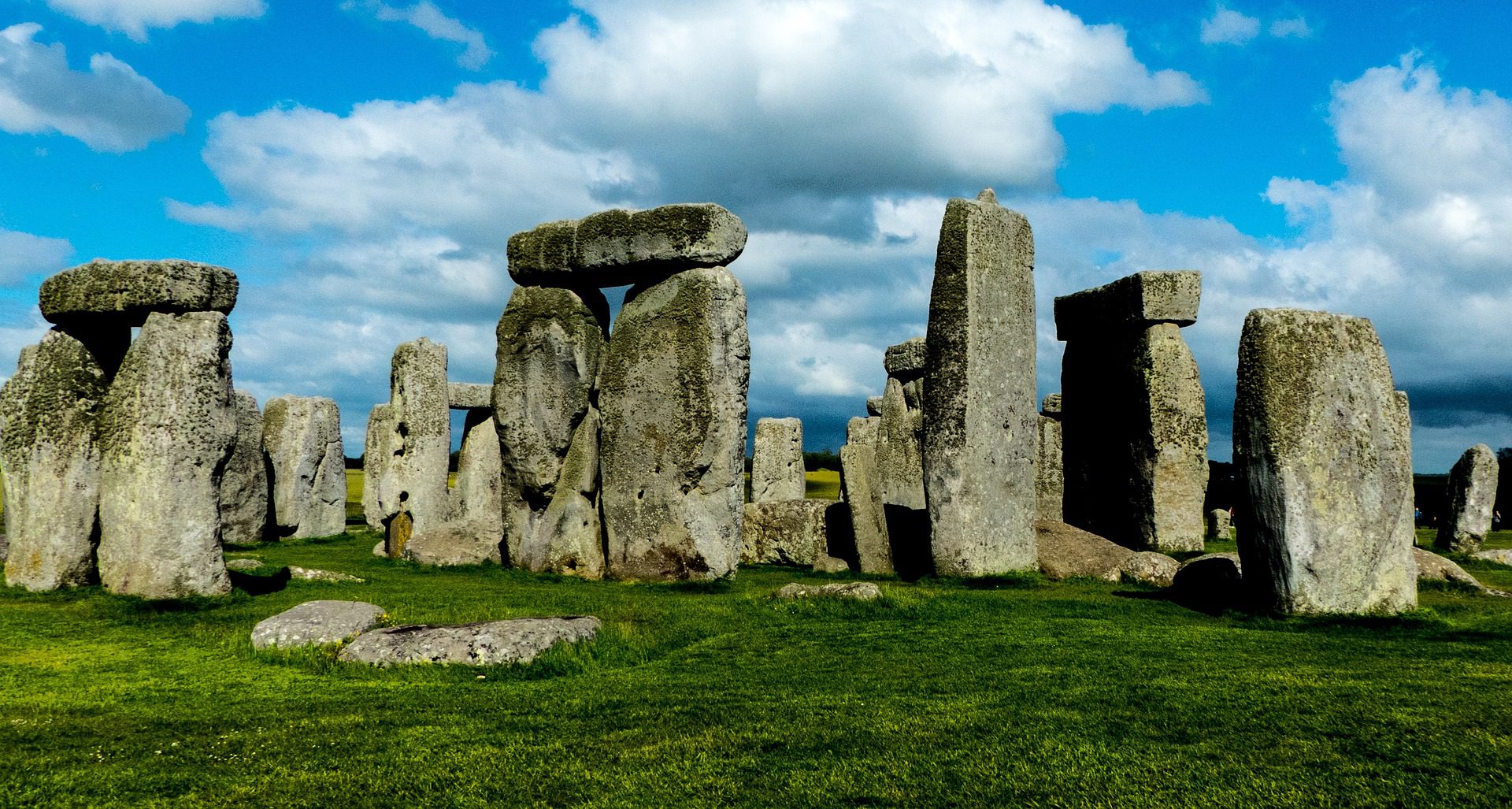“There are no accidents… there is only some purpose that we haven’t yet understood.”
– Deepak Chopra

Who Built Stonehenge?
Stonehenge is one of the most mystical and awe-inspiring sights in England. Built around 2500 BC, the ancient stone monument is unique. Stonehenge is over 5,000 years old and theories still abound as to who actually built it. The first phase of Stonehenge pre-dates the Great Pyramids of Egypt. Some say it was built by the Danes, Romans, Saxons, Greeks, Phoenicians, Celts, Atlanteans, and Egyptians. Others claim that it was built by Aliens!
One of the most popular beliefs was that it was built by the Druids. Today, many scientists agree on the modern theory that three tribes built Stonehenge at three separate times; the Windmill Hill people in 3000 BC, the Beaker people in 2000 BC, and the Wessex people in 1500 BC. In the Summer of 2012, a team of researchers from different universities (Sheffield, Manchester, Southampton, Bournemouth and University College London) concluded that Stonehenge was built as a monument to unify the peoples of Britian, after a long period of conflict and regional difference between eastern and western Britain. There are two types of stones at Stonehenge. The larger 40-ton Sarsen stones originated from Salisbury Plain. And the smaller 4-ton Bluestones are believed to have been hauled to the site from the mountains of South Wales, before the larger stones. Stonehenge is made up of more than 1,500 tons of rock. The largest stones are 23 feet tall and weigh more than 44 tons.

What is the purpose of Stonehenge?
Stonehenge still remains one of the great mysteries of the world. Perhaps most amazing is the precision with which it has been built. It is speculated that the site was a prehistoric observatory or an astronomical calendar. Others claim that it was a sun temple or sacred site where sacrifices took place on specific days of the year. Other theories have suggested that the great stone circle was used as a place of healing and a temple of the ancient druids. Stonehenge has even been linked to the Crop Circle phenomenon, UFOs and extraterrestrials!
New research suggests that Stonehenge was used as a burial site for more than 500 years, long before its giant stones were erected. Archaeologists believe up to 240 creative remains of people were buried within Stonehenge. Recently, researchers have theorized that the ancient village by the Durrington Walls (two miles from Stonehenge, where archaeologists excavated several homes) was built to accommodate the living, while Stonehenge was built to honor the dead. Whatever its purpose, a visit to Stonehenge is not to be missed.
Book Stonehenge Combo Tours & Day Trips from London
During your next visit to the UK, take a fun Stonehenge Combo Tour and Day Trip from London. Visit Stonehenge, Windsor Castle, the historic town of Bath, Stratford-upon-Avon, Winchester and The Cotswolds. Book an exclusive private viewing of Stonehenge and be one of the rare few to walk inside the prehistoric stone formation.
Find and Book Stonehenge Combo Tours and Day Trips from London
Book Exclusive Private Viewing – Inner Circle Access of Stonehenge
Other Ancient Sites: Bluehenge, Avebury and Durrington Walls
In 2010, the skeletal remains (thought to be that of a 14 or 15-year-old) was unearthed about two miles southeast of Stonehenge. Dubbed “The Boy with the Amber Necklace” because he was unearthed with a cluster of amber beads around his neck, it is one of several sets of foreign remains found near the ancient site. According to scientists, the teen came from the Mediterranean, hundreds of miles away; proving the importance of Stonehenge as a travel destination in prehistoric times.
Bluehenge
Stonehenge is not the only ancient site in the area. A second prehistoric stone circle was secretly unearthed by archeologists in the Summer of 2009. Dubbed “Bluehenge,” it is considered to be one of the most important prehistoric finds in decades.
Avebury
Avebury’s Neolithic stone circle dates back almost 6,000 years. The historic site is located about 25 miles north of Stonehenge and 90 miles west of London.
Durrington Walls
In January 2007, an exciting archeological discovery took place at Durrington Walls, located north of Woodhenge, about two miles from Stonehenge. Archeologists described it as the largest prehistoric structure ever found in Britain. The series of Neolithic shafts date back to 2500 BC.
Book Your London Trip
Get the best London travel deals, airfares, car rentals, hotels or vacation apartments from our top Travel Partners.
The Best Time To Visit Stonehenge
Anytime is a good time to visit Stonehenge. Summer and Winter Solstice draws millions of visitors from around the world. Stonehenge is open daily, except Christmas Eve, Christmas Day, Boxing Day (day after Christmas) and New Year’s Day. Except on special occasions, visitors are not allowed to walk amongst the stones.